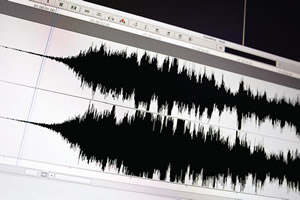I Can Hear Clearly Now

PHOTO © D13
While kids frequently leave you with the impression that they don’t notice anything
that isn’t on their smart phone or screeching at them from a television set, that
isn’t necessarily so. Sometimes even seemingly subtle changes can produce profound
differences and, ultimately, recognition from usually oblivious youth.
Take a roomful of sixth graders at the Robert E. Lamberton Public School in
Philadelphia. Dr. Kenneth Roy, senior principal research scientist at Armstrong Ceiling
Systems, conducted a test at the school involving the acoustics in that sixth grade
classroom. The class was videotaped; however, the teacher was the only one in the
room told the reason for doing so.
Prior to making any changes in the room, Dr. Roy took sound measurements in
the classroom. The existing classroom ceiling consisted of one-half inch thickness of
fiberglass insulation sprayed over plaster. The reverberation rate of sound in the room,
he discovered, was up to 1.3 seconds, far exceeding classroom acoustic (ANSI S12.60)
standards. The sound was, quite literally, bouncing off the ceiling and walls.
Taking advantage of a long weekend, Armstrong installed a suspended acoustic
panel ceiling in the classroom. New ceilings also were installed in the school’s cafeteria
and the principal’s office.
When the sixth grade students returned to class, new sound measurements were
taken. This time, the classroom met the ANSI standard for sound reverberation of 0.60
seconds.
The teacher indicated there appeared to be less fidgeting and talking during
lessons. Her students seemed to be paying more attention. What was even more interesting
was the reaction of the students. When asked if they’d noticed any changes,
there was an immediate response — they noticed the improvement in the sound
levels. Several also commented that the room was a lot brighter, and yet another student,
who sat in the back of the room, said “I can hear (my teacher) a lot better today.”
This article originally appeared in the issue of .